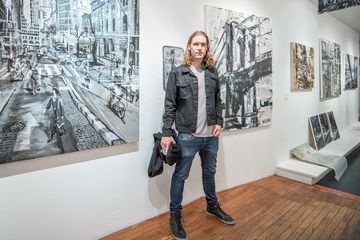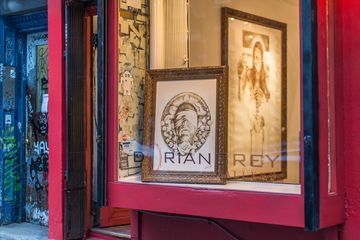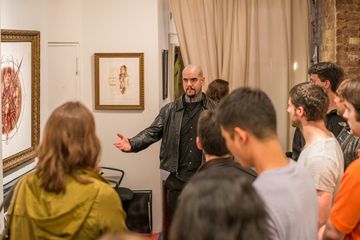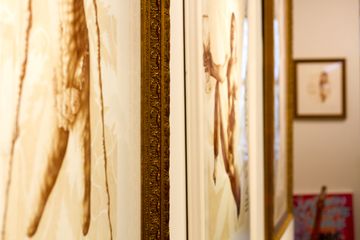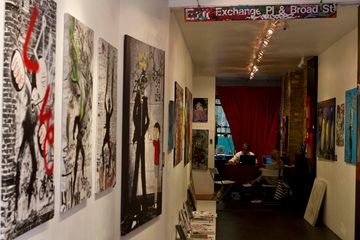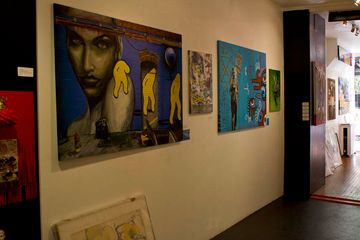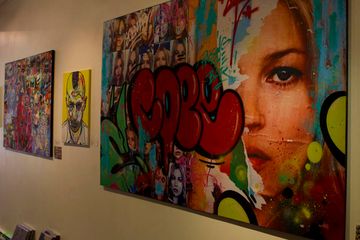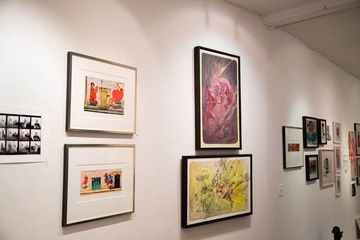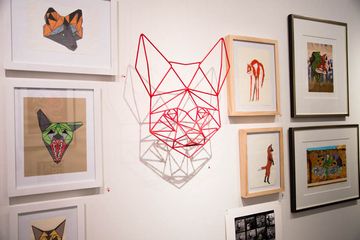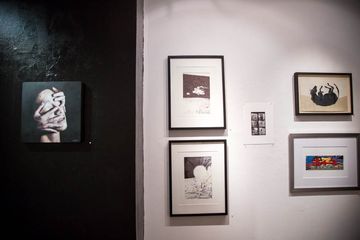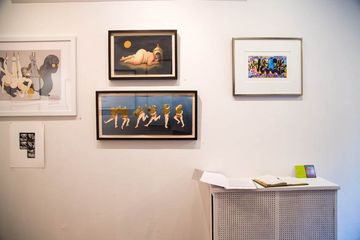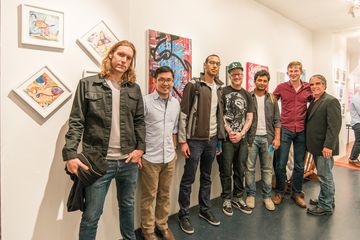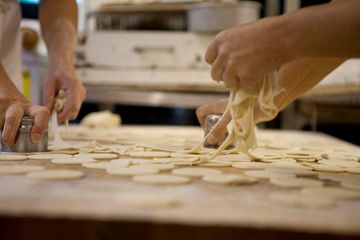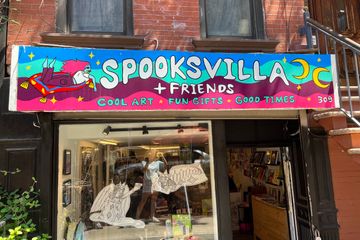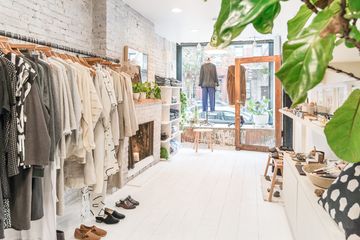
True to the character of the East Village, everything Dorian Grey Gallery does is genuine. As the owner, Christopher Pusey, says, “Our favorite buzzword is authentic.” Christopher has always felt great admiration for the East Village, even when running his gallery in Soho in the 1980s. While I was sitting and speaking with him and his assistant, Molua Muldown, he told me that many of the artists that he featured in his downtown gallery lived in, worked in, or drew inspiration from the East Village. He knew that his next venture would take place in the neighborhood he described as a “living art scene.” After reconnecting with his old friend Luis Accorsi, they became partners in opening Dorian Grey Gallery in 2010.
Christopher went on to describe the East Village as one of the few areas of Manhattan that is still connected to its roots, both spiritually and physically. “The ceiling is tilted and if you drop a ball at the front door, it would roll all the way back into the office,” he said with a smile, referring to the charming historic architecture that abounds in the neighborhood.
The inaugural exhibition of Dorian Grey was a thirty-year look at the work of the street artist John “Crash” Matos, starting with his earliest drawings. The Gallery has gone on to do more shows with Crash: Christopher explained to me that a painted Ferrari that he asked Crash to design for the gallery was featured at the 2015 New York International Auto Show. Though raised in the Bronx, Crash has done a lot of work in the East Village, which is part of the reason why the gallery chose to showcase him: as Christopher explained, Dorian Grey looks to feature artists that are connected to the history of the East Village.
Christopher told me of another artist, Stik, who hails from the inner city district of Shoreditch in London, who wanted his first exhibition in New York to be about honoring the East Village and the area around Tompkins Square Park. After being homeless for many years and then gaining fame as a graffiti artist, Stik decided it was very important to give back to the community. He connected with Dorian Grey in 2013 to create an exhibition of his work, with the primary focus being a 50-foot stick figure Statue of Liberty that can still be seen painted on the building to the left as one exits the gallery. He dedicated it to Tompkins Square Park, the home of the Beat Generation and, in Christopher’s words, “the original Woodstock.”
Molua referred to the three who run Dorian Grey as “a passionate little trio.” Christopher added that they organize “user friendly, tangible art events that families can come to – people even bring their dogs.” There is no doubt that the gallery provides a comfortable atmosphere for artists to come and hang out. On any given day, visitors may find themselves shaking the hand of a world-renowned painter. As Christopher proudly said, “The biggest little gallery in New York is on East 9th and A.”
On each subsequent visit to the gallery, we witnessed fascinating art without fail. On one trip we were able to meet the artist "Thanks" and see his word-based pieces displayed alongside the works of Jake Nelson and Luis Accorsi, and on another trip we talked to the captivating Vincent Castiglia, whose intricately detailed, rust-colored works are made using his own blood.
